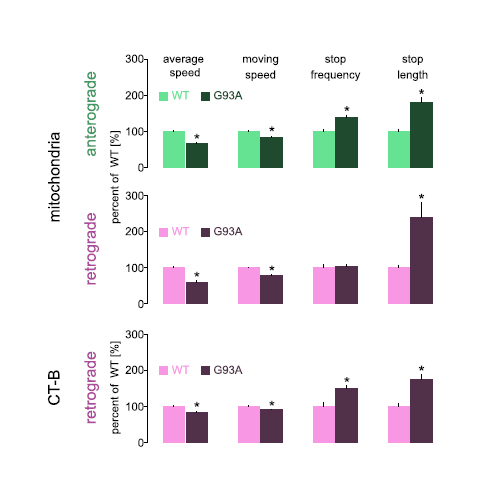Axonal transport deficits and degeneration can evolve independently in mouse models of amyotrophic lateral sclerosis
27-Feb-2012
Axonal transport deficits have been reported in many neurodegenerative conditions and are widely assumed to be an immediate causative step of axon and synapse loss. By imaging changes in axonal morphology and organelle transport over time in several animal models of amyotrophic lateral sclerosis (ALS), we now find that deficits in axonal transport of organelles (mitochondria, endosomes) and axon degeneration can evolve independently. This conclusion rests on the following results: (i) Axons can survive despite long-lasting transport deficits: In the SODG93A model of ALS, transport deficits are detected soon after birth, months before the onset of axon degeneration. (ii) Transport deficits are not necessary for axon degeneration: In the SODG85R model of ALS, motor axons degenerate, but transport is unaffected. (iii) Axon transport deficits are not sufficient to cause immediate degeneration: In mice that overexpress wild-type superoxide dismutase-1 (SODWT), axons show chronic transport deficits, but survive. These data suggest that disturbances of organelle transport are not a necessary step in the emergence of motor neuron degeneration.











